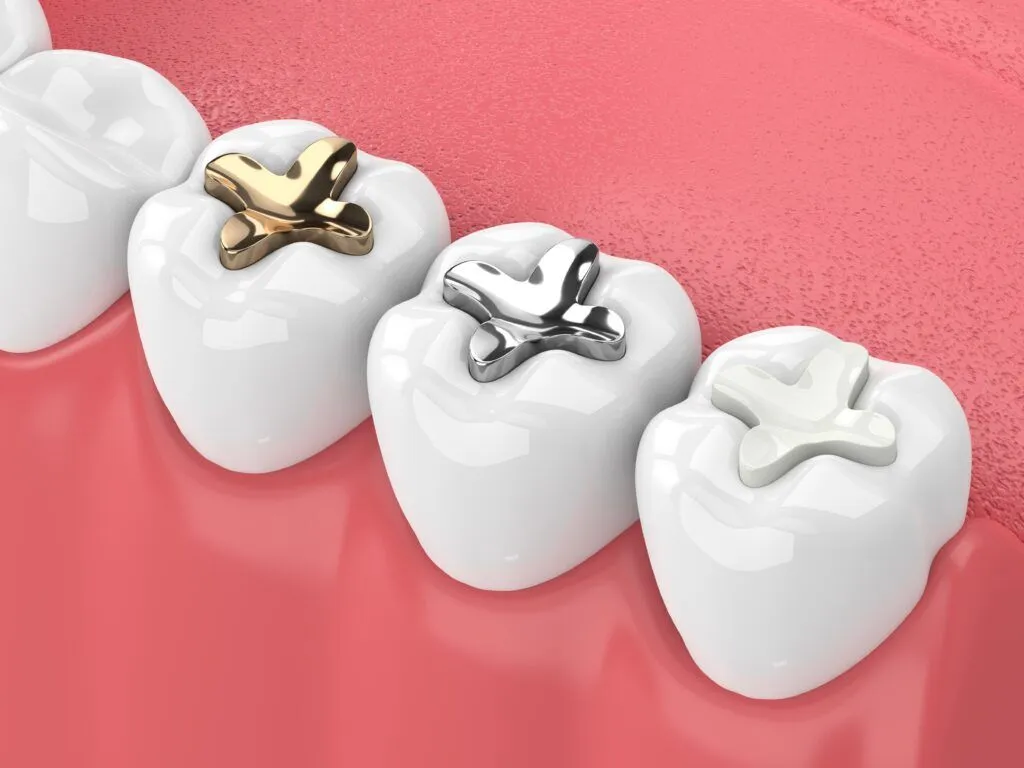
Key facts
- You may need a dental filling if there is a cavity (hole) in your tooth due to decay or trauma.
- Various materials can be used for dental fillings.
- Dental fillings help protect your tooth from further damage.
- A dental filling will help your tooth look and work at its best.
- Your dentist or dental practitioner can tell you the best filling material to fix your tooth.
What is a dental filling?
Your dentist or dental practitioner can use a dental filling to fix a cavity (hole), in a tooth. You may need a filling if you have tooth decay or if the tooth has been damaged due to trauma. Your dentist or dental practitioner may find damage to the structure of a tooth when you have a dental x-ray.
What types of filling are there?
Various materials can be used to fill a cavity (hole) in your tooth. Your dentist or dental practitioner will advise you which is suitable for you.
Composite resin
Composite resin is a white or tooth-coloured material. It can be matched to the colour of your other teeth. Composite resin filling material is bonded (glued) to your tooth. A small amount of your old tooth is removed when getting a composite filling.
Glass-ionomer cement
Glass-ionomer cement is also white or tooth coloured. It is not as strong as composite resin. Glass-ionomer cement might be used if you need a temporary filling. It has many other uses too such as fissure sealing.
Gold and porcelain fillings
Gold and porcelain are long-lasting fillings. Porcelain fillings can be matched to the colour of your other teeth. Gold fillings are very strong and long lasting. They can be used for molar teeth.
You may need 2 appointments to get a gold or porcelain filling, as they are made in a dental laboratory, to fit your tooth.
Temporary fillings
Your dentist or dental practitioner may decide to do a temporary filling. Sometimes the filling material will need to be removed again very soon.
You may need a temporary filling when:
- your tooth needs to be treated over more than one appointment
- there is not enough time to complete your treatment in one dental visit
- you need emergency dental treatment
- your tooth cavity needs to be covered up between root canal treatment appointments
Amalgam
Dental amalgam is a mixture of metals, including silver, copper, tin, mercury and zinc. It’s a very strong filling material, which has been used for more than 150 years.
Amalgam fillings have become less common in recent years. If you already have amalgam fillings you don’t need to have them replaced unless there is a specific reason to do so.
The downside of amalgam is that more of your tooth may need to be cut away to help the filling stay in place. Also, a small amount of mercury can be absorbed by your body from the filling. Amalgam is safe and effective to use for most people, and is supported by the Australian Dental Association.
If you are pregnant or breastfeeding or have kidney disease your dentist may choose a different material. Amalgam is not commonly used in children
What should I expect after a dental filling?
After you have a filling, your tooth might feel more sensitive when you:
- eat something sweet
- eat something hot or cold
- bite your teeth together
You should see your dentist or dental practitioner if your tooth is still sensitive after a few days.
Dental fillings do not last forever. They can become chipped or worn or change colour over time.
What are the benefits and risks of a dental filling?
A filling is usually a simple treatment for tooth decay and it might make the tooth sensitive for a short time. Over time, fillings may chip or crack, allowing food and bacteria to become trapped. Visit your dentist or dental practitioner for regular check-ups.

